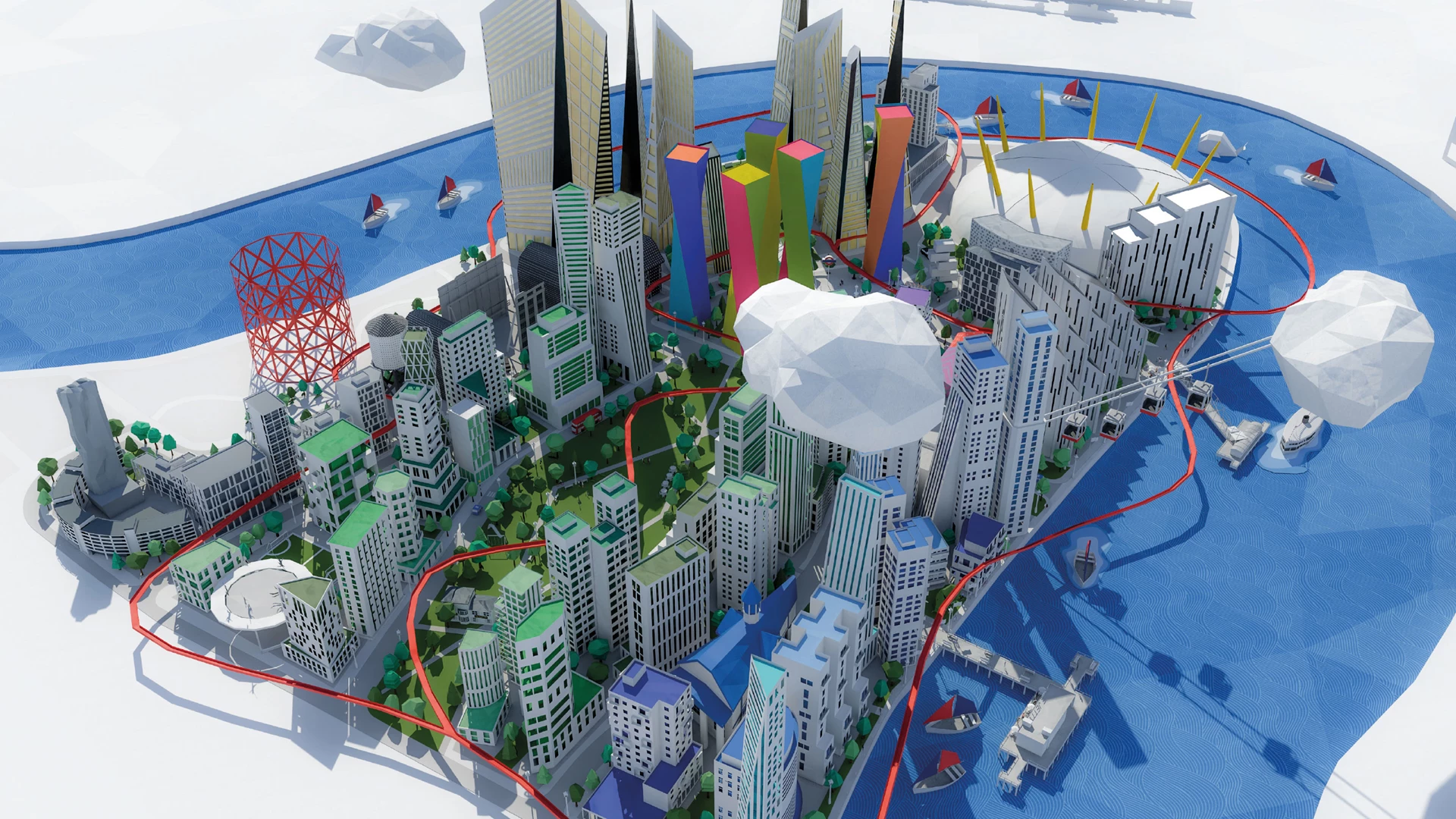Harnessing AI: Enhancing human emotion in CGIs
The third instalment of our series focusing on the benefits of AI in shaping the future of architectural visualisation and brand.
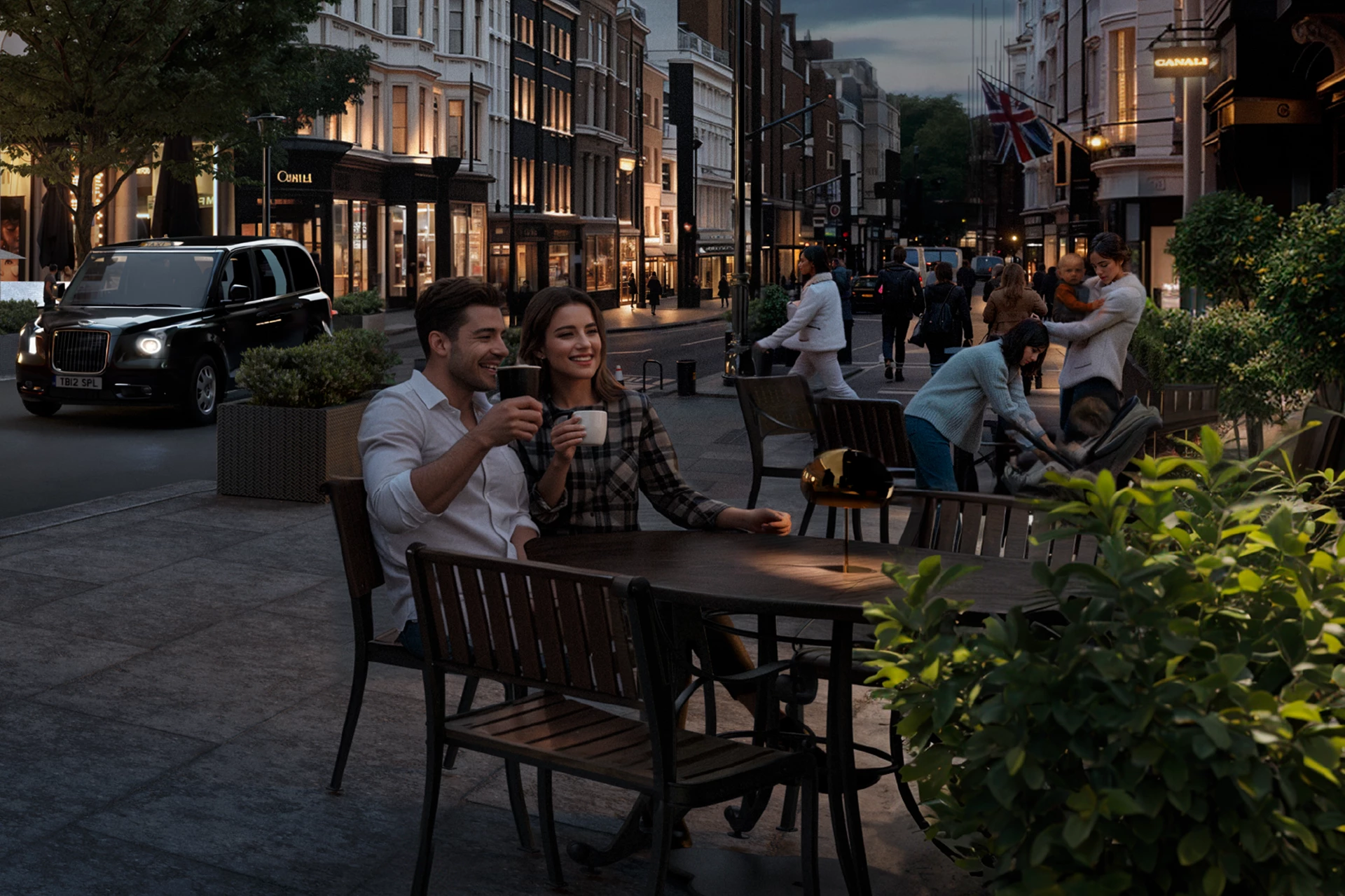
How CGIs represent humans is key to telling a compelling and believable story.
For projects that will be years, even decades, in the making, retaining the emotional tie to your audience has never been more important.
Using AI, we can enhance this connection with immediacy by refining details, capturing cultural nuances, and accurately representing ethnic diversity to contribute to the overall impact of your story.
But why is strengthening emotional connection so important and what role does emotion play when it comes to marketing your vision?
Below, we’ll explore the psychology behind emotion and visual storytelling, and we’ll provide you with four ‘before and after’ examples that illustrate how we’re using AI to enhance human emotion.

We’re wired to pay more attention to people who look like us
Representation matters – whether that's based on race, culture, gender, age... it's important.
And it's not just about fairness, morality, and reflecting reality with accuracy – although each of these aspects carry a lot of value individually.
But as humans, it’s also important to note that we’re wired to pay more attention – and even be more attracted – to people who look like us.
Summarising the findings of a study exploring attraction published in Evolution and Human Behaviour, lead author and PhD student Amy Zhao from UQ’s School of Psychology concluded in a 2023 article: “Faces that look similar spark a sense of kinship, causing people to feel comfort, familiarity, and belonging with those who look like them.”
Nailing these human details within a CGI provides your audience with a sense of belonging within a development yet to exist in the real world.
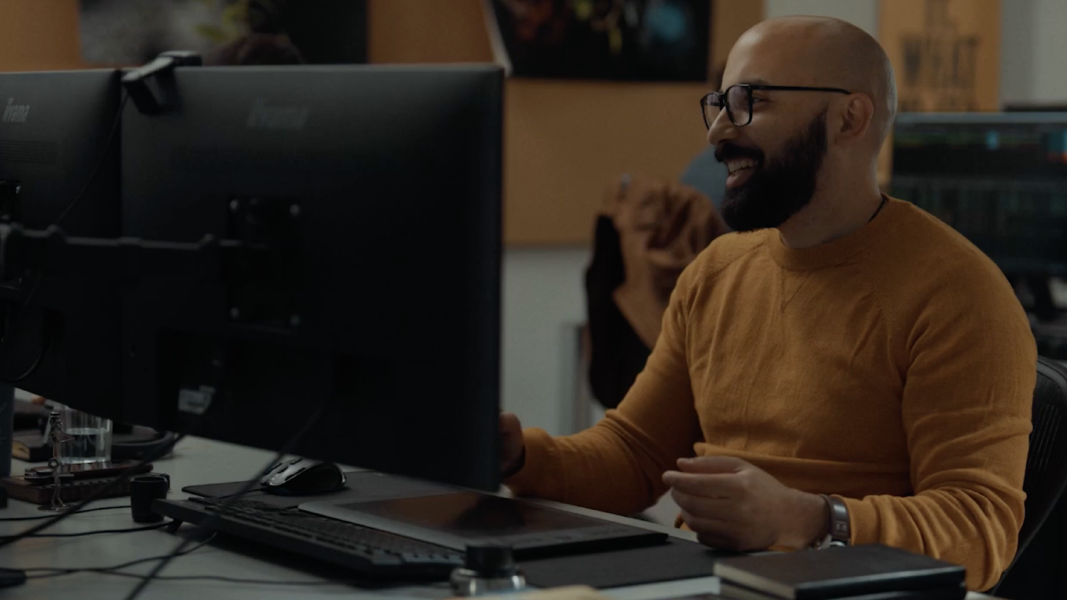
Emotional content performs better than rational content
An analysis of the UK-based Institute of Practitioners in Advertising dataBANK, referenced in the Forbes feature, Emotion: The Super Weapon Of Marketing And Advertising, found that advertising campaigns with purely emotional content performed about twice as well (31% vs 16%) with purely rational content.
Purely emotionally content also performed better (31% vs 26%) than content with a mix of both.
There’s also neurological evidence that supports this analysis.
In Dan Hill’s Emotionomics: Leveraging Emotions for Business Success, he writes: “The emotional brain processes sensory information in one fifth of the time our cognitive brain takes to assimilate the same input.”
Suggesting that as humans, as an audience, as a person observing a CGI, we feel first and think second.
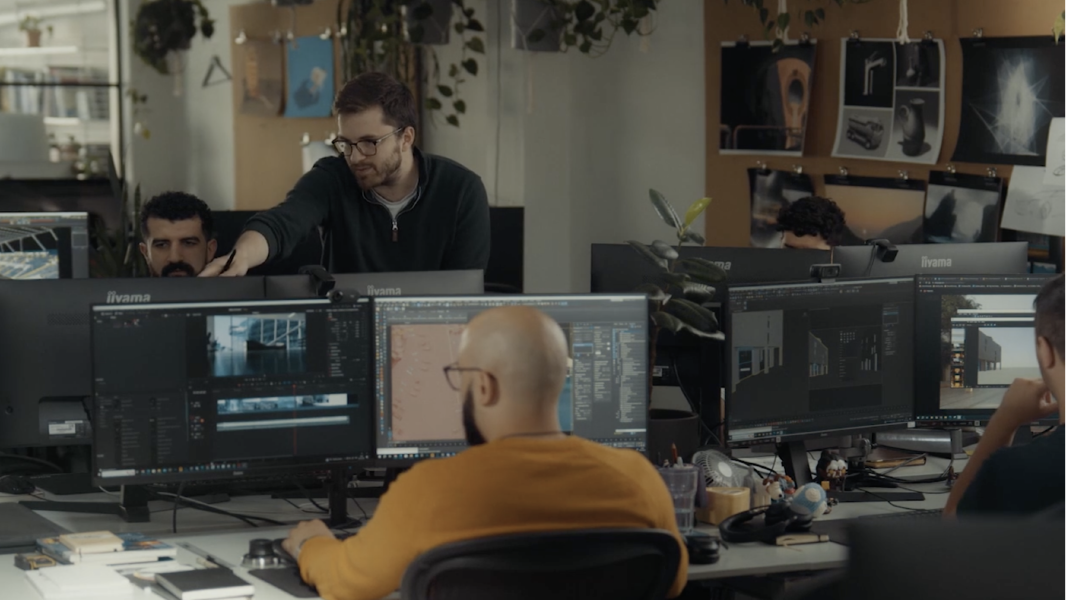
Emotion increases memorability
An extract from Pop Neuro’s, The Neuromarketing of Emotional Memories and Commercials, reads: “Emotional experiences are simply prioritized by the brain.
“Whether good or bad, if something is important enough to arouse our emotions, our brain assumes it’s important and therefore should be remembered.”
So when it comes to creating a distinctive suite of CGIs that capture your vision and tell a compelling story, if you want to create a lasting effect, you have to lead with emotion.
And to do this with CGIs – where inanimate objects are the focal point – using AI to be more purposeful when maximising the emotive value of people, how they look, how they’re interacting within the scene, the stories they convey, is absolutely invaluable.
To demonstrate this, take a look at the following ‘before and after’ CGIs that our artist, Sara Capuozzo, has enhanced with AI.

The ‘before’ image featured above was created using a 3D model person – an advancement that, in recent years, has helped the industry.
These 3D models ensure people are the right scale, have the right lighting, and cast shadows – but they have their downsides.
They’re often lacking in detail, and with a limited number of ‘actors’ available, they can lack cultural nuances needed for specific stories.
In contrast, the ‘after’ image, using the previous CGI as a base, shows an AI-enhanced version focussing on the following elements:
- An additional person in the foreground for the original woman to interact with adding a more emotional depth to the scene.
- Enhanced human details including visual information indicating age, mood, relationships with others, and lifestyle.
- Additional people in the background to bring life to the scene by creating a sense of fluidity, movement, and activity.
- Enhanced detail, lighting, and shadow throughout the image to improve accuracy and control where the eye naturally falls as it moves through the image.
The outcome, a distinctive and engaging CGI that, through its detail, tells a compelling, story with increased emotive value.
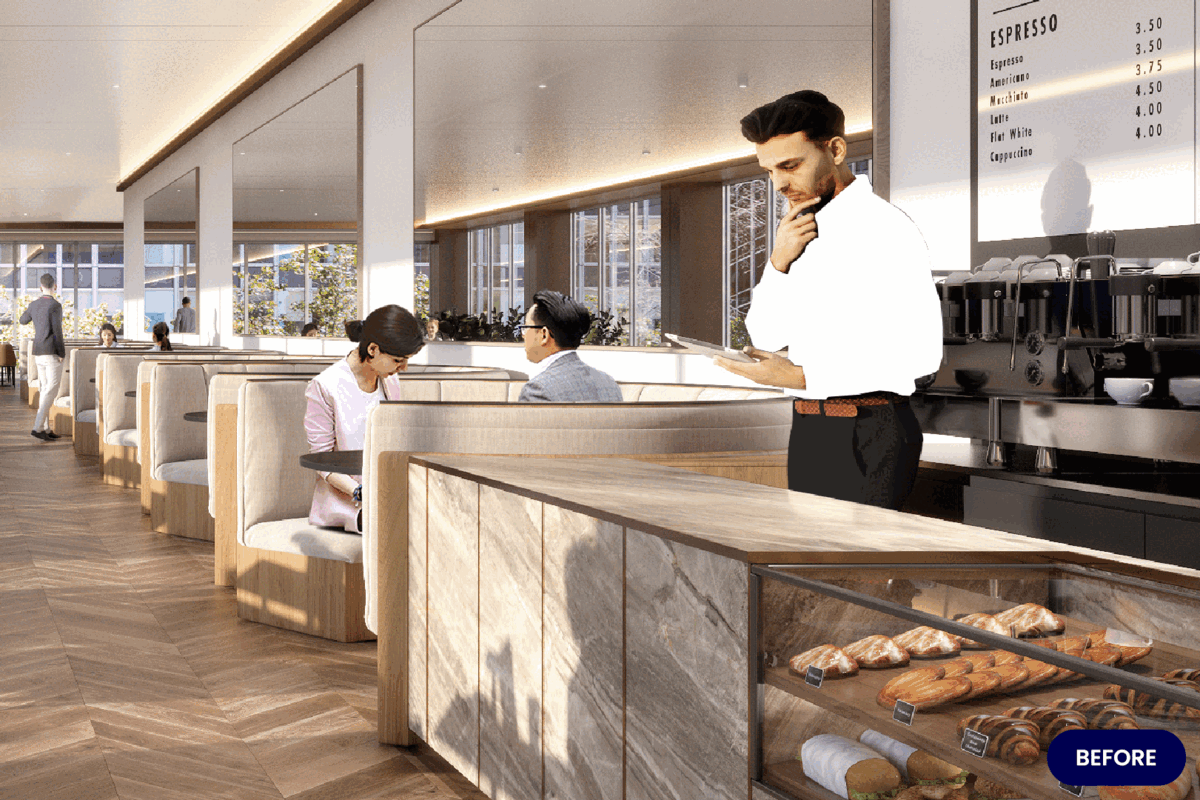
Unlike the first set of images, in the set of CGIs directly above, the majority of the AI-generated enhancements are focussed on the 3D model in the foreground, while the rest of the scene undergoes only slight adjustments.
Focusing on the cafe worker behind the counter, we can see how even isolated enhancements of just one model can contribute to the overall story of the scene.
In the ‘after’ CGI, we're provided a better sense of age – we can tell this is a young cafe worker.
The additional lighting and shadow details gives us a better indication of his uniform. No longer just a solid white shirt, we can now see pocket details, buttons, a belt buckle – a uniform that would belong in a higher-end establishment.
These extra details not only provide us with more information to connect with, they subtly contribute the story of the surrounding environment.
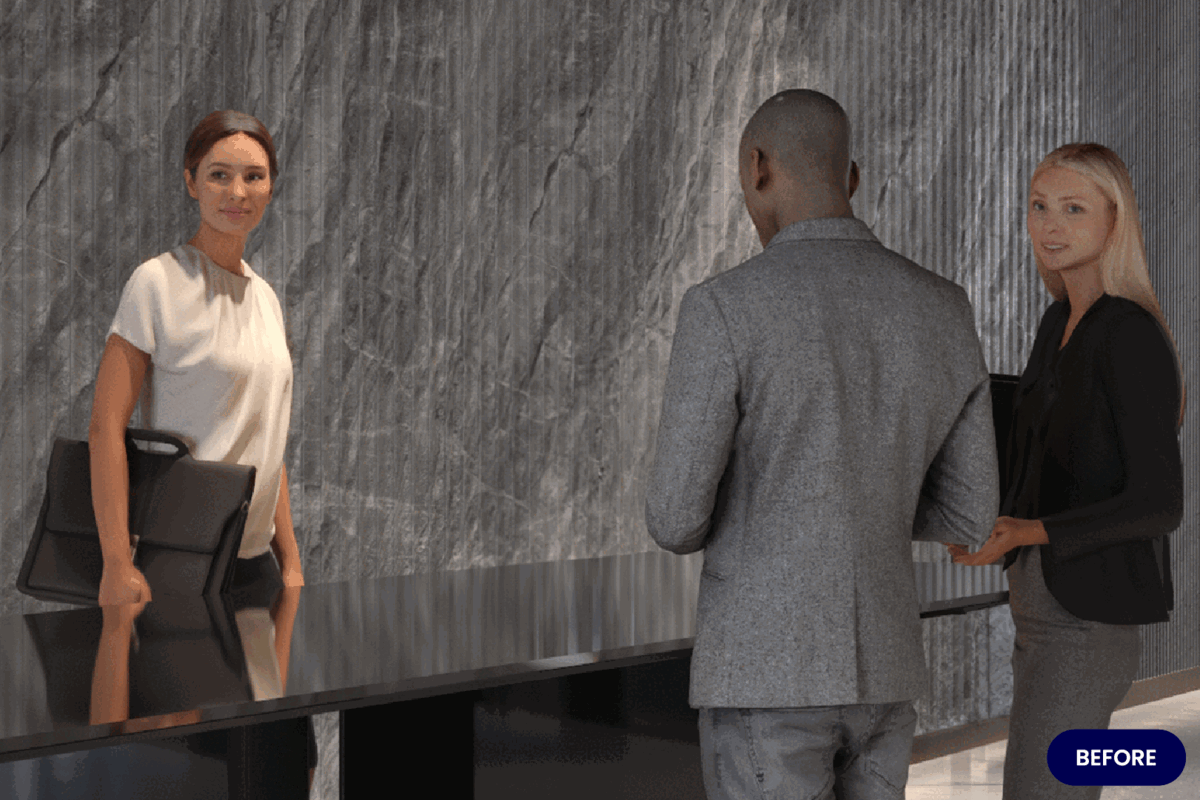
Expanding on an earlier point, 3D models can lack the cultural nuances needed to tell an authentic and believable story.
To offer a truer reflection of place – wherever that may be in the world – AI allows us to be more specific when it comes to details regarding race and ethnicity, as shown in the image above.
It provides our clients with more choice and the opportunity to create a hyper-realistic representation of reality.
And for the represented target audience, it, once again, creates a better sense of belonging to a project that could be years or even decades in the making.
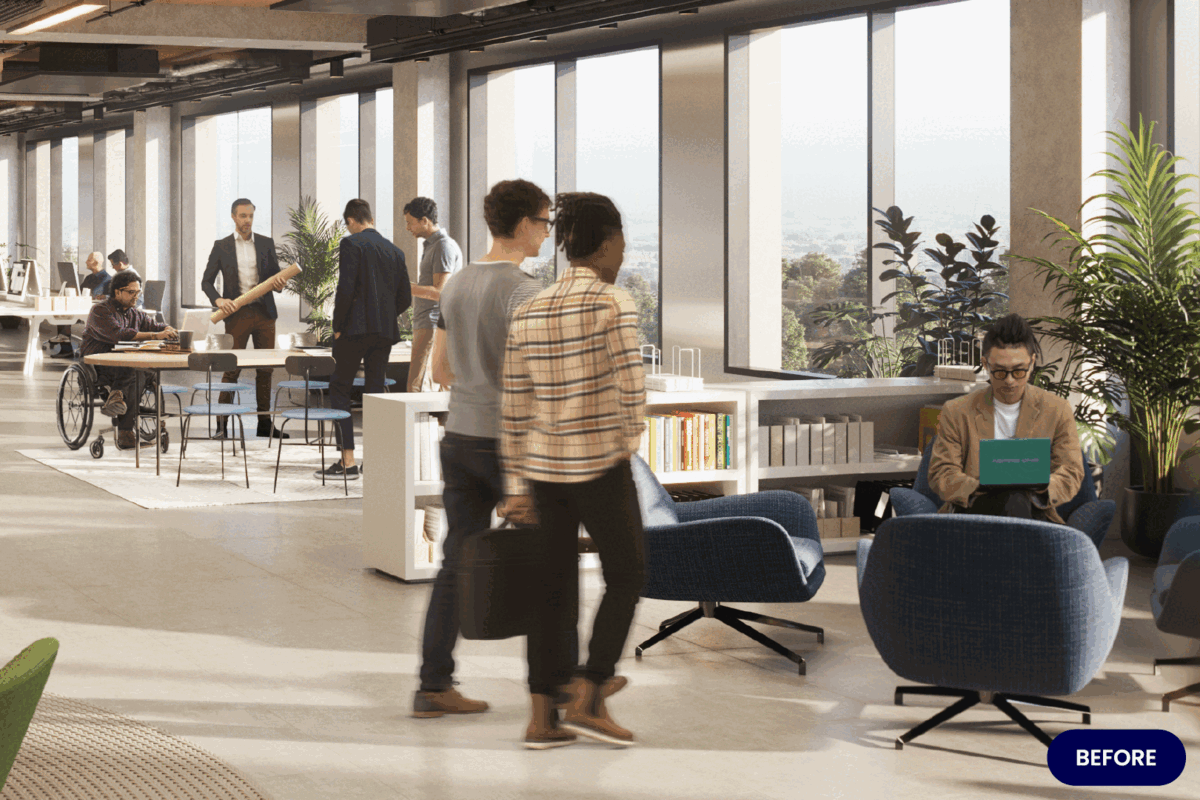
Remaining on this topic, take a look at the set of CGIs above.
The 'before' image was repurposed in 2023 for a project, published by cgarchitect.com, where we highlighted the lack of female artists within the architectural visualisation community. Click here to view the full project.
Using an uncropped version of the scene above, we asked our audience, 'what's the first thing you notice about this CGI?'.
Further on in the article, we reveal the scene only contains male models to shine a light on the gender imbalance within the industry.
But if we wanted to reuse this image for a different purpose and create a scene with a more balanced representation of gender diversity and ethnicity, we can achieve this quickly using AI.
Using AI, Sara is quickly able to apply changes to a model’s gender, age, or ethnicity to suit the needs of a client’s brief.
Let us know if you have any questions about the article or would like to learn more by emailing us. If you'd like to set up an AI workshop with our team, get in touch with our Senior Client Director, Mark Lee.
In our next instalment, we'll be focussing on using an AI as an alternative to photoshoots – saving time, money, and the planet.
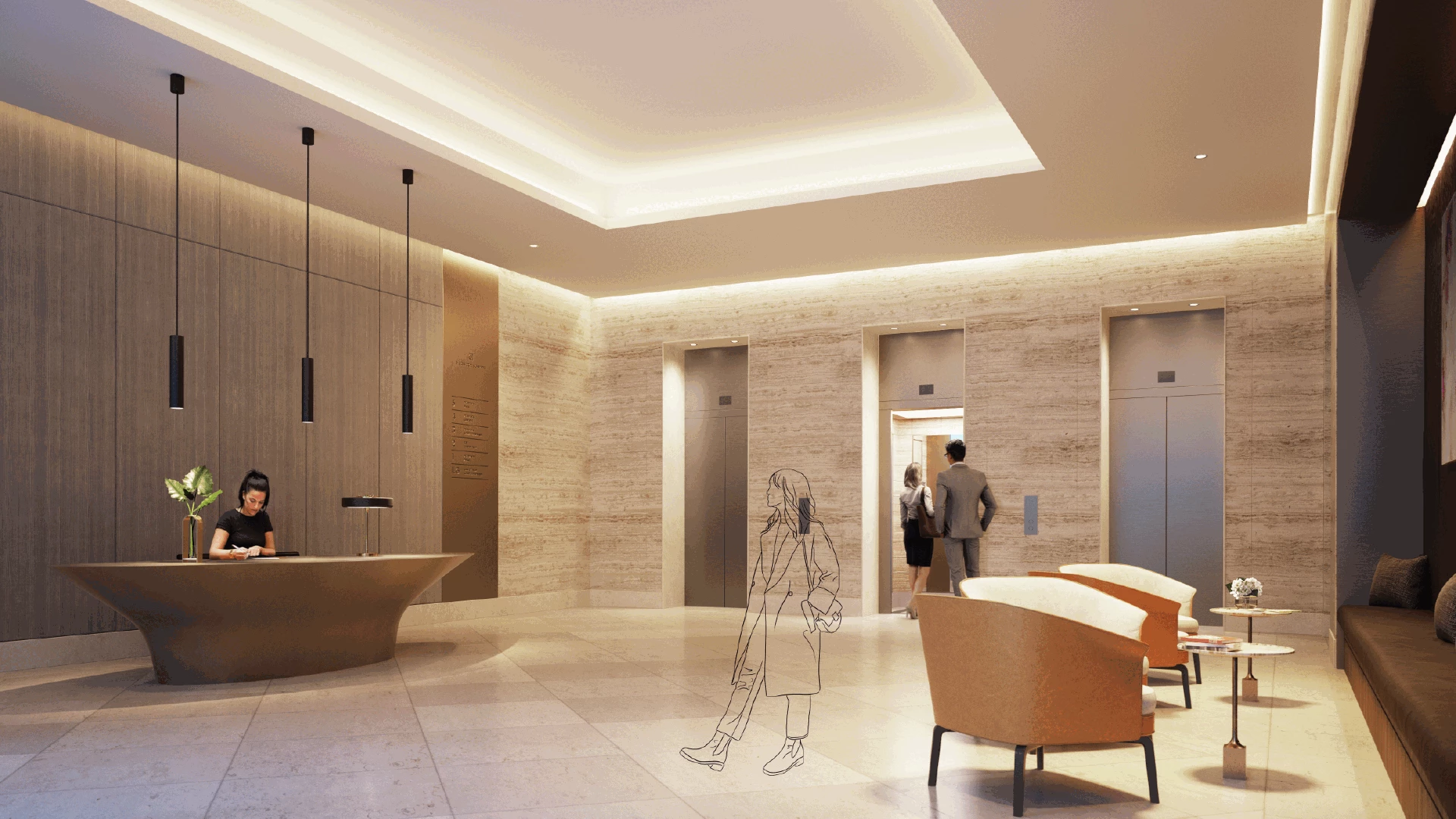

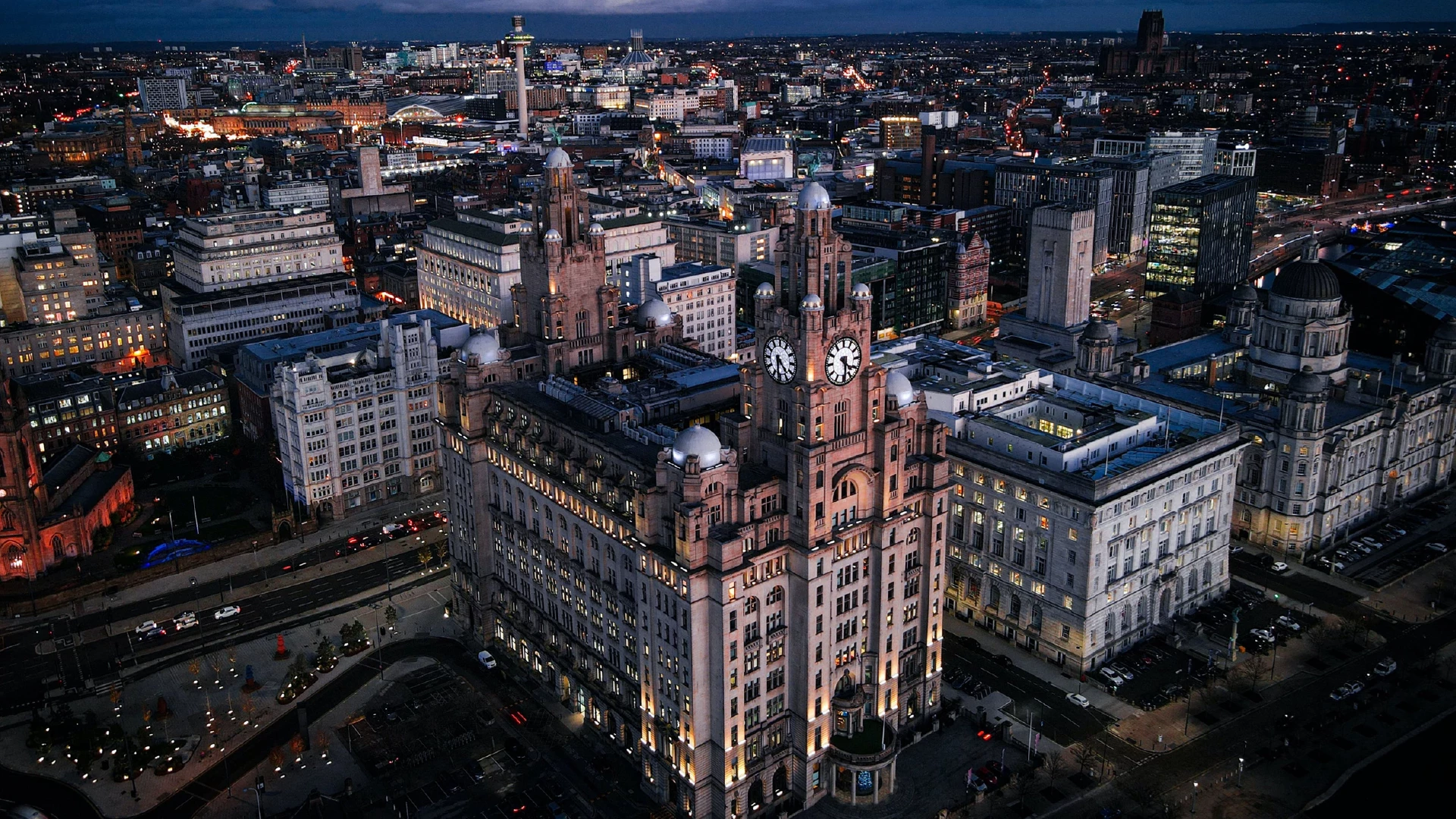

.webp)




